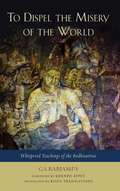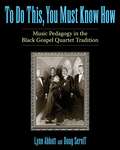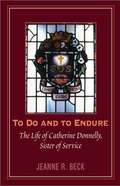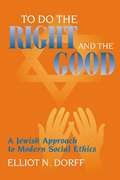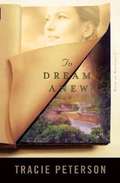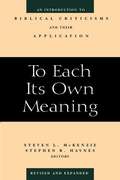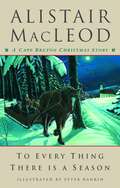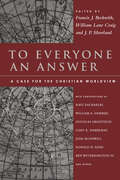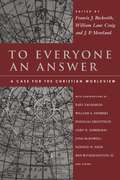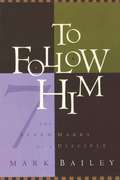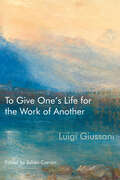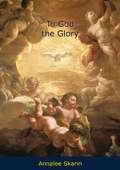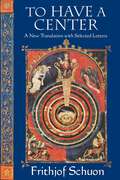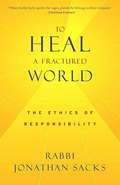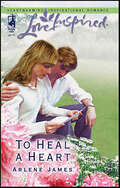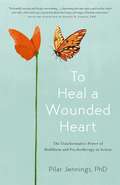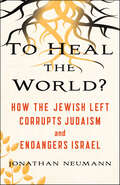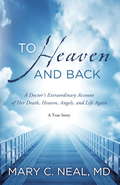- Table View
- List View
To Cross A Line
by Karen RayIn 1938, after a minor traffic accident, seventeen-year-old Egon Katz joins an increasing number of German Jews desperately trying to find a way out of the country.
To Dispel the Misery of the World
by Ga Rabjampa Khenpo Appey Rigpa Translations"Offered here is the pith advice on mind training according to the great vehicle. This is the path followed by all the buddhas and their children of the past, present, and future, the most profound instruction of the oral lineage, and the quintessence of the ocean of all the excellent teachings."--Ga Rabjampa This short book contains a wealth of advice for those wanting to become more fully human. When we are disconnected from others we flounder; only by recognizing the profound interdependence of all beings do we flourish and grow. The famous Seven-Point Mind Training, in just a few pages of one-line instructions, provides direct and powerful advice for breaking through the chronic barriers that separate us from those around us. It is easy to see why it is one of the most cherished texts in all of Tibetan Buddhism. Ga Rabjampa, an influential master of the fifteenth century, here uses the Seven-Point Mind Training as the basis for illuminating the essential teachings on Buddhism, giving special attention to the practices of giving and taking (tonglen) and of transforming adversity into opportunities for spiritual growth.
To Do This, You Must Know How: Music Pedagogy in the Black Gospel Quartet Tradition (American Made Music Series)
by Lynn Abbott Doug SeroffTo Do This, You Must Know How traces black vocal music instruction and inspiration from the halls of Fisk University to the mining camps of Birmingham and Bessemer, Alabama, and on to Chicago and New Orleans. In the 1870s, the Original Fisk University Jubilee Singers successfully combined Negro spirituals with formal choral music disciplines and established a permanent bond between spiritual singing and music education. Early in the twentieth century there were countless initiatives in support of black vocal music training conducted on both national and local levels. The surge in black religious quartet singing that occurred in the 1920s owed much to this vocal music education movement. In Bessemer, Alabama, the effect of school music instruction was magnified by the emergence of community-based quartet trainers who translated the spirit and substance of the music education movement for the inhabitants of working-class neighborhoods. These trainers adapted standard musical precepts, traditional folk practices, and popular music conventions to create something new and vital Bessemer's musical values directly influenced the early development of gospel quartet singing in Chicago and New Orleans through the authority of emigrant trainers whose efforts bear witness to the effectiveness of “trickle down” black music education. A cappella gospel quartets remained prominent well into the 1950s, but by the end of the century the close harmony aesthetic had fallen out of practice, and the community-based trainers who were its champions had virtually disappeared, foreshadowing the end of this remarkable musical tradition.
To Do and to Endure: The Life of Catherine Donnelly, Sister of Service
by Jeanne R. Beck"In her portrayal of the life of Sister Catherine Donnelly, founder of the Sisters of Service, author Jeanne Beck has succeeded in weaving a tapestry rich in texture, broad in scope and deeply revealing of the character of a memorable Canadian woman."-Brian F. Hogan, C.S.B.When teacher Catherine Donnelly first arrived in Western Canada from Ontario in 1918, she discovered two things: first, the need for a Catholic presence in the rural public schools of the west, and second, her own calling to be a religious.Catherine saw that the west was growing rapidly, and that there was a lack of religious guidance for the people of the region, particularly the immigrants coming from other countries. She looked to existing Catholic orders as a means of reaching these people, but found that none of the orders were willing to accept Catherine’s radical ideas, such as her refusal to wear the traditional nun’s habit, and her strong belief in the individuality of members of orders. Catherine founded the Sisters of Service in 1922, and through this new order was able to make an impact on the lives of townspeople and students in prairie schools of the west.In this biography, Jeanne Beck reconstructs the extraordinary life of Sister Catherine Donnelly. The well-researched account is at once informative and inspiring a fitting tribute to the woman who believed "the spiritual life and the intellectual life have the same root deep in the unity of the intelligence."
To Do the Right and the Good: A Jewish Approach to Modern Social Ethics
by Elliot N. DorffFrom the preface: One glance at the contents of this book amply explains why anyone would be interested in its topics: Communal relations, interfaith relations, national policy, procedural justice, poverty, war, and forgiveness among individuals and communities are issues that have deeply affected human life from its very inception. The modern world's instant communication over any distance; its internationally interwoven economy; its capabilities of mass destruction; and its simultaneous potential for true global learning, understanding, and enrichment make these age- old issues all the more compelling. Some of the old answers seem to do just fine in our modern world, whereas others seem to be woefully inadequate. In some cases, we are not even sure how to apply ancient wisdom to the new circumstances in which we find ourselves. New explorations of these issues, then, are clearly in order.
To Dream Anew (Heirs of Montana # #3)
by Tracie PetersonHeirs of Montana book 3. Though the Diamond V ranch is flourishing and their own family growing, Dianne and Cole Selby find their hard-earned success threatened as a band of Indians on the warpath inch closer to the valley they call home. When a new family settles in the area with ambitions to establish an empire in Montana, it quickly becomes apparent that they will stop at nothing to uproot Dianne's family from the land they've nourished and come to love. Peterson's vivid writing enlivens this pioneer saga of the Chadwicks and Selbys as they endure devastating losses and find unexpected joys.
To Each its Own Meaning: An Introduction to Biblical Criticisms and their Application
by Steven L. Mckenzie Stephen R. HaynesThis volume introduces the reader to the most important methods of biblical criticism. It serves as an indispensable handbook for the work of students approaching biblical studies for the first time and for the professional interpreter of scripture who wants to understand the latest currents in biblical scholarship.
To Every Thing There Is a Season: A Cape Breton Christmas Story
by Alistair MacleodThe story is simple, seen through the eyes of an 11-year-old boy. As an adult he remembers the way things were back home on the farm on the west coast of Cape Breton. The time was the 1940s, but the hens and the cows and the pigs and the sheep and the horse made it seem ancient. The family of six children excitedly waits for Christmas and two-year-old Kenneth, who liked Halloween a lot, asks, “Who are you going to dress up as at Christmas? I think I’ll be a snowman.” They wait especially for their oldest brother, Neil, working on “the Lake boats” in Ontario, who sends intriguing packages of “clothes” back for Christmas. On Christmas Eve he arrives, to the delight of his young siblings, and shoes the horse before taking them by sleigh through the woods to the nearby church. The adults, including the narrator for the first time, sit up late to play the gift-wrapping role of Santa Claus. The story is simple, short and sweet, but with a foretaste of sorrow. Not a word is out of place. Matching and enhancingthe text are black and white illustrations by Peter Rankin, making this book a perfect little gift. For readers from nine to ninety-nine, our classic Christmas story by one of our greatest writers.
To Everyone an Answer: A Case for the Christian Worldview
by Norman L. GeislerTo Everyone an Answer: A Case for the Christian Worldviewfaith and reasonarguments for God?s existencethe case for Jesus the problem of evilpostmodernismreligious pluralism and Christian exclusivismPreeminent in their respective fields, the contributors to this volume offer a solid case for the Christian worldview and a coherent defense of the Christian faith.
To Everyone an Answer: A Case for the Christian Worldview: Essays in Honor of Norman L. Geisler
by J. P. Moreland William Lane Craig Francis J. BeckwithIn a society fascinated by spirituality but committed to religious pluralism, the Christian worldview faces sophisticated and aggressive opposition. A prior commitment to diversity, with its requisite openness and relativistic outlook, has meant for skeptics, critics and even many Christians that whatever Christianity is, it cannot be exclusively true or salvific. The editors Francis J. Beckwith, William Lane Craig and J. P. Moreland offer a solid case for the Christian worldview and a coherent defense of the Christian faith. They have gathered together in this book essays covering all major aspects of apologetics, including: faith and reason; arguments for God’s existence; the case for Jesus; the problem of evil; postmodernism; religious pluralism and Christian exclusivism.
To Fly Again: Surviving the Tailspins of Life
by Dean Merrill Gracia BurnhamReflecting on the horific year hse and her husband, Marten, spent as hostages in the Thelipene jungle and her experiences since returning home Gracia shares how she is rebuilding her life by god's grace alone. you may be one of the many thousands who know the Burnham's story or perhaps you are seeking direction and hope in the midst of your own pain. This book addresses the confusion, fear, anxiety , and loss of control that all peiple in crisis experience. It also illistrates how God longs to pour his grace in to people with broken dreams and fill there life with new meaning and joy.
To Follow Him: The Seven Marks of a Disciple
by Mark BaileyMost Christians know that Jesus commanded his followers to "Go therefore and make disciples of all nations. " Yet many remain unclear about what Christ intended such a disciple should be or do. Recognizing that now, more than ever, believers need clear, biblical teaching on this all-important subject, author Mark Bailey provides a biblical measuring stick to help readers discern what it means to be the type of disciple Christ urges us to be. Drawing upon humor, simple visuals, and memorable principles to drive home this vital message, Bailey offers a fresh, authoritative teaching for the 90s on what it means to be a true disciple.
To Forget It All and Begin Anew
by Steven M. SchroederGermany's transition from Nazism to peaceful, if at times reluctant, integration into the western and Soviet spheres during the decade immediately following the Second World War is one of the most remarkable events of the twentieth century. Shattered relations between Germans and their wartime enemies and victims had rendered prospects for peaceful relations between these groups unimaginable, or a dream belonging to the distant future. However, numerous grassroots initiatives found varying degrees of success in fostering reconciliation.Drawing on underutilized archival materials, To Forget It All and Begin Anew reveals a nuanced mosaic of like-minded people - from Germany and other countries, and from a wide variety of backgrounds and motives - who worked against considerable odds to make right the wrongs of the Nazi era. While acknowledging the enormous obstacles and challenges to reconciliatory work in postwar Germany, Steven M. Schroeder highlights the tangible and lasting achievements of this work, which marked the first steps toward new modes of peaceful engagement and cooperation in Germany and Europe.
To Give One’s Life for the Work of Another
by Luigi GiussaniFather Luigi Giussani engaged tirelessly in educational initiatives throughout the course of his life. Much of his thought was communicated through the richness and rhythm of oral discourse, preserved as audio and video recordings in the archive of the Fraternity of Communion and Liberation in Milan.This volume presents the last three spiritual exercises of the Fraternity of Communion and Liberation, drawing from the transcripts of these recordings. In these exercises Giussani investigates the rise of ethics and the decline of ontology that have accompanied modernity and the spread of rationalism. Bearing up against old age and illness, he resisted the urge to withdraw, instead finding new avenues of communication and the technological means to reach all corners of the movement. To Give One’s Life for the Work of Another explores the nature of God, the powerful human experience of self-awareness, and the fundamental components of Christianity, in the unmistakable voice of a consummate teacher.At a time when young people are abandoning the church and questioning the value of faith, Father Giussani’s method of judging and verifying Christianity as an experience is a timeless intervention.
To God the Glory
by Annalee SkarinIn the words and teachings of Jesus, TO GOD THE GLORY is a divinely inspired message revealing how His great love is being poured out in abundance and can, if man will accept it, change his life and lead him into His Kingdom.“Behold, I, Jesus Christ, the Alpha and Omega, the Beginning and the End, the Great Amen, have commanded Annalee Skarin to write these, my words, and to send them forth unto the ends of the earth, that, you, who know my voice might be prepared to enter into the New Day—that you might be purified even as I Am pure. For this is my commandment unto you, and I give no commandment save I prepare the way for its fulfillment.“This work is given that all my holy promises might begin to be made manifest in very deed, yea, that they might begin to be fulfilled in you, for the time is at hand, even the great day of preparation, the day of Almighty God the Father.”—Annalee Skarin
To Govern Is to Serve: An Essay on Medieval Democracy (Medieval Societies, Religions, and Cultures)
by Jacques DalarunTo Govern Is to Serve explores the practices of collective governance in medieval religious orders that turned the precepts of the Gospels—most notably that "the first will be last, the last will be first"—into practices of communal deliberation and the election of superiors. Jacques Dalarun argues that these democratic forms have profoundly influenced modern experiences of democracy, in particular the idea of government not as domination but as service. Dalarun undertakes meticulous textual analysis and historical research into twelfth and thirteenth-century religious movements—from Fontevraud and the Paraclete of Abelard and Heloise through St. Dominic and St. Francis—that sought their superiors from among the less exalted members of their communities to chart how these experiments prefigured certain aspects of modern democracies, those allowing individuals to find their way forward as part of a collective. Wide ranging and deeply original,To Govern Is to Serve highlights the history of the reciprocal bonds of service and humility that underpin increasingly fragile democracies in the twenty-first century.
To Have a Center: A New Translation with Selected Letters
by Frithjof SchuonIn this new edition of his powerfully original work,Schuon covers an array of metaphysical, cosmological, and anthropological subjects. In the book&’s signature essay, entitled "To Have a Center," the author surveys the ambiguous phenomenon of modern genius, showing how Western humanistic society has replaced the time-honored veneration of the saint and the hero with the cult of individualistic "genius." In other notable essays, Schuon deals with the relation between intelligence and character, the distinction between historical Gnosticism and pure gnosis, the degrees and dimensions of theism, the spiritual messages of David, Shankara, and Honen, and the symbolism of Plains Indian vestments.This revised edition, containing over 65 pages of new material, features a fully revised translation from the French original as well as previously unpublished selections from Schuon&’s letters and other private writings. Also included are editor&’s notes, a glossary of foreign terms, and an index.
To Have and To Hold (Mystery and the Minister’s Wife Series, Book #17)
by Sunni JeffersFOR RICHER OR POORER... KATE AND PAUL HAVE NO CLUE what they have committed to when they agree to provide premarital counseling for a wealthy young Copper Mill woman and her fiance. Jessica Mackenzie and Trace Jackson are deeply in love and have plans to pay cash for a modest house with Jessica's trust fund. But when Jessica's check bounces and her trust fund is nearly emptied, the couple's dream of buying a home are crushed. Jessica asks Kate to help her solve the mystery, and in no time Kate realizes the money was stolen. Worse, Kate is sure the crime was committed by someone who knows Jessica... and knows her well. Suddenly those closest to Jessica--her stepmother, her cousin, and even her fiancé--become suspects, and everyone's faith is shaken. Jessica's benevolent father doubts Trace, and encourages his daughter to call off the wedding. Tensions run high, and fingers point in every direction, and Kate hardly knows how to investigate the missing money without worsening the family's crisis. Relying on constant prayer and her knack for character judgment, Kate sets out to solve the mystery before the wedding is canceled and the family is torn apart.
To Have and to Hold: Three Autumn Love Stories (A Year of Weddings Novella)
by Betsy St. Amant Katie Ganshert Becky WadeTo Have and to Hold: Three Autumn Love StoriesBy Betsy St. Amant, Katie Ganshert & Becky WadeThey’ve helped orchestrate the perfect day for countless couples. Now twelve new couples will find themselves in the wedding spotlight in the second Year of Weddings novella collection.Love Takes the Cake: A September Wedding Story by Betsy St. AmantCharlotte Cantrell is always the baker; never the bride. When Will, a regular at Charlotte’s bakery, catches her attention, she can only hope that he is the reliable man this single mother has always hoped to find. The problem is that he’s regularly stopping in to buy cookies for another girl. But when Charlotte is hired to bake a host of wedding goodies for a difficult bride and finds out Will is the best man, she has the perfect opportunity to get to know him better—and find out how serious Will is about this other girl in his life.The Perfect Arrangement: An October Wedding Story by Katie GanshertAmelia Woods is a small-town wallflower and the proud owner of Forget-Me-Nots, a quaint flower shop. Her love life has always been a bit lackluster—until she ends up in an embarrassing fender-bender with handsome Nate Gallagher. Meanwhile, Amelia’s younger brother, William, has proposed to his girlfriend. Amelia would be excited except she has evidence that the fiancée is not who she says she is. It seems Nate is the only one available for any advice-giving, and he’s good at it—and pretty fun to talk to, too. As Amelia works to craft the perfect flower arrangements for other people, she begins to wonder if real love is better than the dream. And if it is, will Nate still be interested when he learns who she is?Love in the Details: A November Wedding Story by Becky WadeWhen Josh returns to his hometown of Martinsburg, Texas, to help his best friend get married, he didn’t intend to run into church wedding coordinator—and ex-girlfriend—Holly. He can’t help but pine after the girl he never got over. Holly broke up with Josh years ago in an attempt to ensure his future success. But she loved him then and still loves him now. As she helps him plan his best friend’s wedding, she longs to be with Josh but doesn’t feel worthy of his big-time lifestyle when she is more comfortable in her small-town world. Will Josh and Holly be able to keep things as they are when their true feelings threaten to surface at every turn?
To Heal a Fractured World: The Ethics of Responsibility
by Jonathan SacksOne of the most respected religious thinkers of our time makes an impassioned plea for the return of religion to its true purpose--as a partnership with God in the work of ethical and moral living.What are our duties to others, to society, and to humanity? How do we live a meaningful life in an age of global uncertainty and instability? In To Heal a Fractured World, Rabbi Jonathan Sacks offers answers to these questions by looking at the ethics of responsibility. In his signature plainspoken, accessible style, Rabbi Sacks shares with us traditional interpretations of the Bible, Jewish law, and theology, as well as the works of philosophers and ethicists from other cultures, to examine what constitutes morality and moral behavior. "We are here to make a difference," he writes, "a day at a time, an act at a time, for as long as it takes to make the world a place of justice and compassion." He argues that in today's religious and political climate, it is more important than ever to return to the essential understanding that "it is by our deeds that we express our faith and make it real in the lives of others and the world."To Heal a Fractured World--inspirational and instructive, timely and timeless--will resonate with people of all faiths.From the Hardcover edition.
To Heal a Heart
by Arlene JamesWhile hurrying to catch a plane, widowed lawyer Mitch Sayer finds a single page from a handwritten letter, a letter offering forgiveness to an unknown recipient. But thoughts of its possible owner flee his mind when he meets his attractive seatmate, Piper Wynne.Guilt has driven Piper from her family, and her new job as an insurance investigator offers the prospect of starting over. Mitch’s discovery of her letter and his quest for its addressee make it difficult to continue to hide her past, especially as their new friendship deepens. Will Mitch’s love for Piper truly heal her heart?
To Heal a Wounded Heart: The Transformative Power of Buddhism and Psychotherapy in Action
by Pilar JenningsEarly on in her clinical practice, psychoanalyst Pilar Jennings was presented with a particularly difficult case: a six-year-old girl who, traumatized by loss, had stopped speaking. Challenged by the limitations of her training to respond effectively to the isolating effect of childhood trauma, Jennings takes the unconventional path of inviting her friend Lama Pema—a kindly Tibetan Buddhist monk who experienced his own life-shaping trauma at a very young age—into their sessions. In the warm therapeutic space they create, the young girl slowly begins to heal. The result is a fascinating case study of the intersection of Western psychology and Buddhist teachings. Pilar’s story is for therapists, parents, Buddhists, or any of us who hold out the hope that even the deepest childhood wounds can be the portal to our capacity to love and be loved.
To Heal as Jesus Healed
by Barbara Shlemon Ryan Matthew Linn Dennis LinnThe following quotes are taken from the back cover of the book: "Wonderful awesome things occur when the sick feel loved through the prayer and compassionate touch of caregivers." According to Barbara A Camden, the President of the Association of Christian Therapists, "This book assists and encourages caregivers to be vehicles of God's tender love and compassion. Simple explanations and real-life examples clarify the power of the Rite of Anointing of the Sick. Priests will find it especially helpful in dispelling the confusion and ignorance surrounding the Rite and in explaining its purpose and worth in any health care setting." The authors of the book, "DENNIS LINN and MATTHEW LINN, S.J. work together as a team (together with Sheila Linn), integrating physical, emotional and spiritual wholeness. They have worked as hospital chaplains and therapists, and have led courses and retreats on healing in over forty countries and in many universities and hospitals. They are the authors of fifteen books which have sold over a million copies in English and have been translated into more than fifteen different languages." Further, the author, "BARBARA SHLEMON RYAN is president of Beloved Ministry and chairs the Department of Pastoral Care for Trinity College of Graduate Studies. She travels nationally and internationally as a retreat director, workshop leader and conference speaker. Barbara is a founding member of the Association of Christian Therapists and a member of the Federation of Christian Ministries. She is the author of five highly successful books."
To Heal the World?: How the Jewish Left Corrupts Judaism and Endangers Israel
by Jonathan NeumannA devastating critique of the presumed theological basis of the Jewish social justice movement—the concept of healing the world.What is tikkun olam? This obscure Hebrew phrase means literally “healing the world,” and according to Jonathan Neumann, it is the master concept that rests at the core of Jewish left wing activism and its agenda of transformative change. Believers in this notion claim that the Bible asks for more than piety and moral behavior; Jews must also endeavor to make the world a better place.In a remarkably short time, this seemingly benign and wholesome notion has permeated Jewish teaching, preaching, scholarship and political engagement. There is no corner of modern Jewish life that has not been touched by it. This idea has led to overwhelming Jewish participation in the social justice movement, as such actions are believed to be biblically mandated.There's only one problem: the Bible says no such thing.In this lively theological polemic, Neumann shows how tikkun olam, an invention of the Jewish left, has diluted millennia of Jewish practice and belief into a vague feel-good religion of social justice. Neumann uses religious and political history to debunk this pernicious idea, and shows how the Bible was twisted by Jewish liberals to support a radical left-wing agenda.In To Heal the World?, Neumann explains how the Jewish Renewal movement aligned itself with the New Left of the 1960s, and redirected the perspective of the Jewish community toward liberalism and social justice. He exposes the key figures responsible for this effort, shows that it lacks any real biblical basis, and outlines the debilitating effect it has had on Judaism itself.
To Heaven and Back: A Doctor's Extraordinary Account of Her Death, Heaven, Angels, and Life Again: A True Story
by Mary C. Neal#1 NEW YORK TIMES BESTSELLER • One million copies sold! Dr. Mary Neal (featured in the Netflix original series Surviving Death) tells the incredible story of the kayak accident during a South American adventure that took her to heaven—where she experienced God&’s peace, joy, and angels—and back to life again. In 1999 in the Los Rios region of southern Chile, orthopedic surgeon, devoted wife, and loving mother Dr. Mary Neal drowned in a kayak accident. While cascading down a waterfall, her kayak became pinned at the bottom and she was immediately and completely submerged. Despite the rescue efforts of her companions, Mary was underwater for too long, and as a result, died. To Heaven and Back is Mary&’s remarkable story of her life&’s spiritual journey and what happened as she moved from life to death to eternal life, and back again. Detailing her feelings and surroundings in heaven, her communication with angels, and her deep sense of sadness when she realized it wasn&’t her time, Mary shares the captivating experience of her modern-day miracle. Mary&’s life has been forever changed by her newfound understanding of her purpose on earth, her awareness of God, her closer relationship with Jesus, and her personal spiritual journey suddenly enhanced by a first-hand experience in heaven. To Heaven and Back will reacquaint you with the hope, wonder, and promise of heaven, while enriching you own faith and walk with God.

